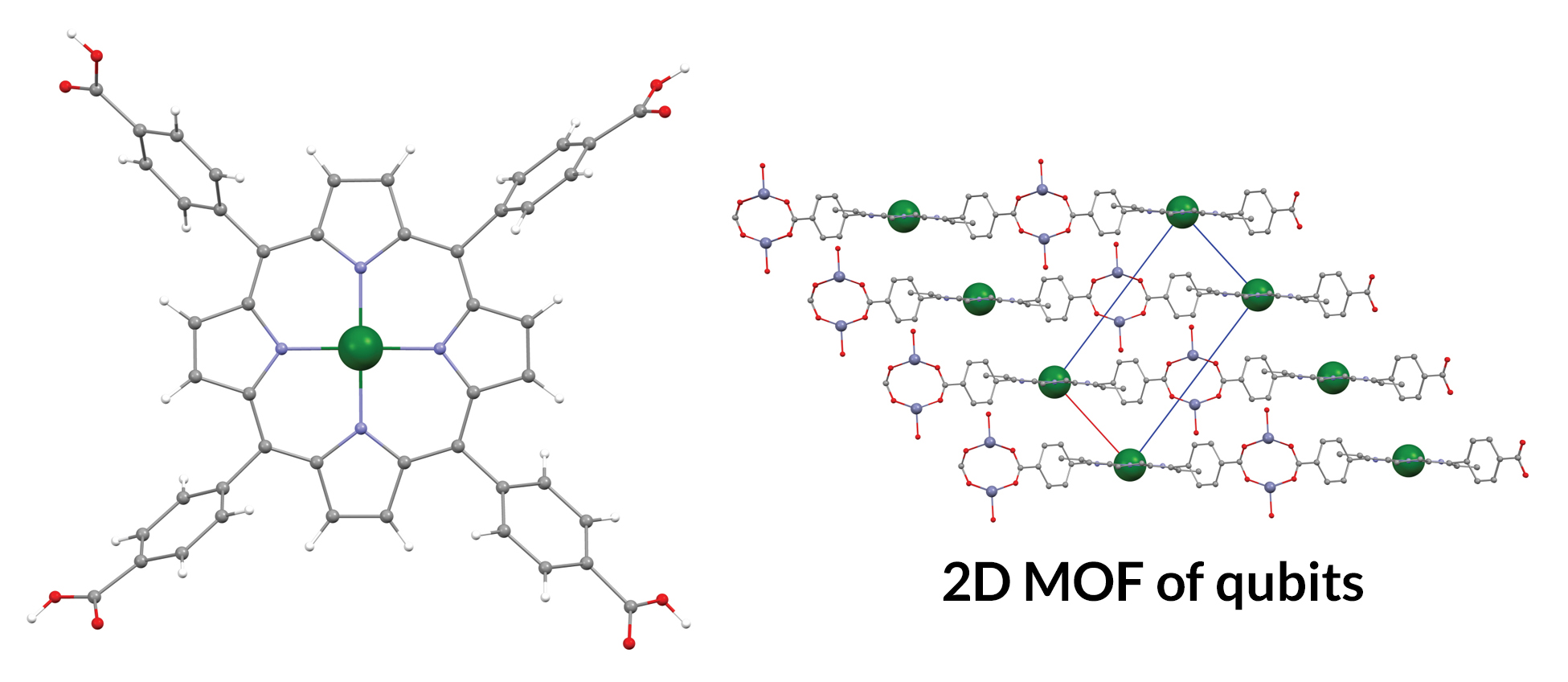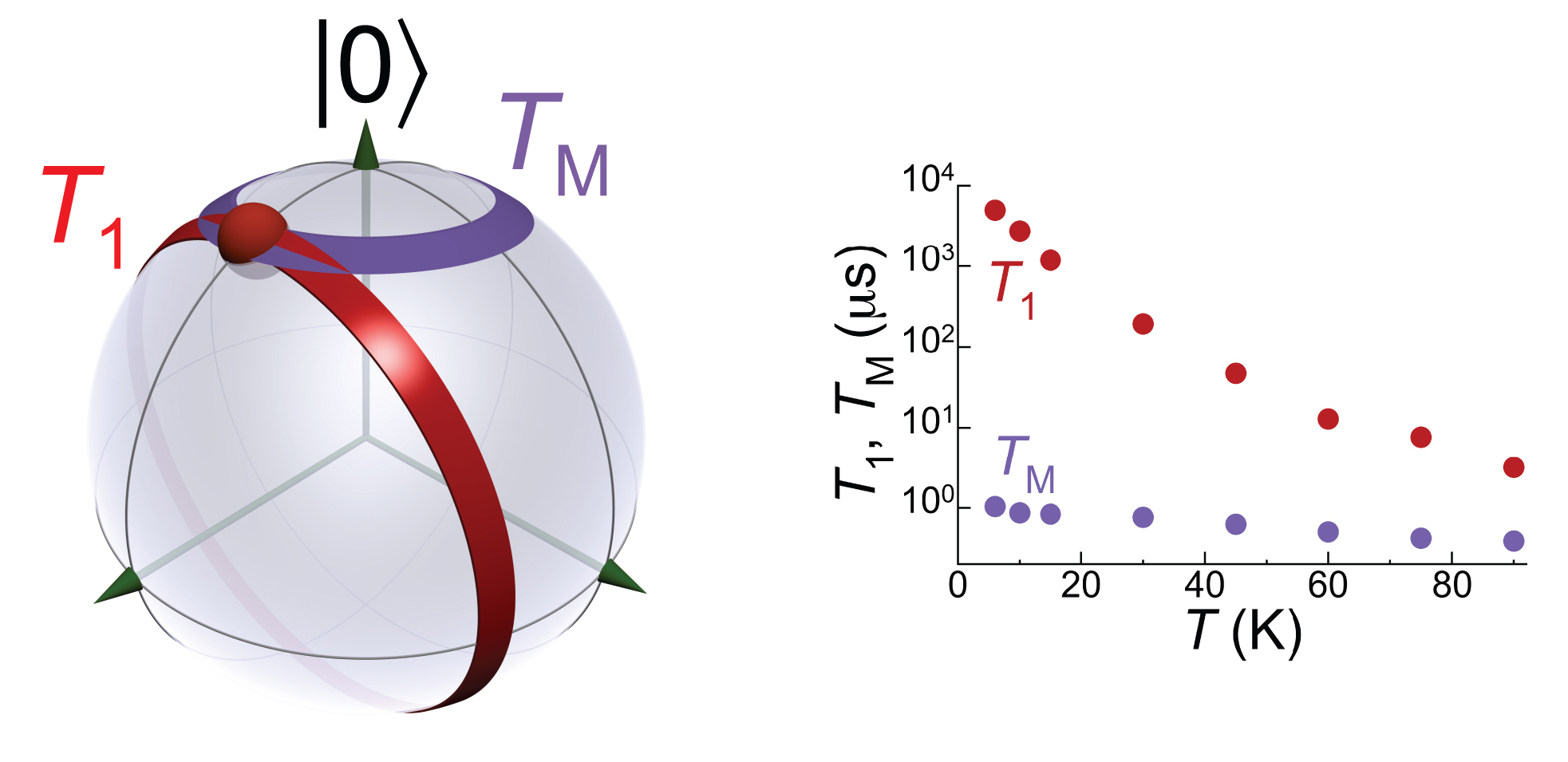SCIENTIFIC ACHIEVEMENT
Researchers developed a way to build a 2D lattice of molecular-spin qubits (quantum bits of information), with control over qubit orientation and localization.
SIGNIFICANCE AND IMPACT
The work enables the integration of molecular quantum-information hardware into the scalable, robust, solid-state architectures needed for performing quantum computation.

Hardware for a quantum computer
Quantum computing is a hot topic these days for good reason: if realized, quantum computers could solve problems that are quantitatively and qualitatively beyond what’s possible with today’s classical computers. By harnessing phenomena such as wave-function superposition, a quantum computer could tackle otherwise intractable problems from cryptography and financial modeling to artificial intelligence and the simulation of quantum-realm chemical and nanotech systems.
While computer scientists are developing the necessary software, materials scientists are working on hardware. The two quantized electron-spin orientations of a magnetic molecule form a natural two-level quantum system that could provide the basis for encoding the states of a quantum bit of information, or qubit. This approach facilitates scalability, in that extremely large numbers of identical qubits could be obtained in one reaction. However, it also requires the ability to maintain control over both the positions and orientations of the molecules in a solid-state device, something that previous research involving isolated molecules on surfaces had suggested would be difficult.
A 2D nanosheet with porphyrin qubit nodes
In this work, researchers hypothesized that the required control could be enforced through the periodicity of 2D metal–organic frameworks (MOFs) with molecular qubits forming the nodes. These nodes would consist of porphyrins: macrocyclic organic molecules with metal ions at their centers. Specifically, they focused on Cu(II) porphyrin molecules (CuTCPP) that connect through four coordinating carboxylic acid groups.
The targeted 2D MOF with a square grid of regularly spaced and homogeneously oriented porphyrin nodes was successfully formed by reaction with diamagnetic Zn(II) ions. Single-crystal x-ray diffraction measurements at ALS Beamline 11.3.1 allowed the determination of the solid-state structure of the 2D MOF. Due the challenging size and intrinsic stacking of the available crystals, this was only possible thanks to the ALS’s unique capabilities in small-molecule crystallography (now at Beamline 12.2.1).
The quantum coherence of the CuTCPP molecule was evaluated both isolated and as a node in the MOF. The molecule exhibited long spin-lattice relaxation times (T1) and phase-memory times (TM), on the order of milliseconds, indicating that CuTCPP is a valid qubit candidate and, more importantly, that its quantum coherence is maintained upon insertion into the 2D framework.

Toward integration into hybrid architecture
The researchers also demonstrated that monolayer nanodomains of the 2D MOF are readily formed at an air-water interface. A controlled number of layers of these nanodomains can then be transferred to a variety of substrates, preserving the homogeneity and orientation of the CuTCPP molecules, as confirmed through in situ grazing-incidence x-ray scattering (GIXS) performed at SOLEIL Synchrotron and electron paramagnetic resonance.
Eventually a protocol was developed allowing the direct, in situ formation of qubit-rich nanodomains over a mica substrate that mimics the oxide-layer surfaces found in classical solid-state devices. Topographic observations and local chemical analyses confirmed that similar isolated nanodomains were formed at microscopically selected locations.
Overall, the work demonstrates the potential of a framework approach toward the integration of molecular qubits onto solid surfaces with controlled localization and enforced orientation. Future developments should involve the downsizing of localization control to tens of nanometers, which would be necessary to construct hybrid (classical/quantum) processors.

Contact: Olivier Roubeau
Researchers: A. Urtizberea (Spanish National Research Council [CSIC], Universidad de Zaragoza, and Centro Universitario de la Defensa, Spain); E. Natividad, P.J. Alonso, and O. Roubeau (CSIC and Universidad de Zaragoza); M.A. Andrés and I. Gascón (Universidad de Zaragoza); and M. Goldmann (Sorbonne Universités, Université Paris Descartes, and Synchrotron SOLEIL, France).
Funding: Spanish Ministry of Economy and Competitiveness, Aragón government, and Spanish Ministry of Education. Operation of the ALS is supported by the U.S. Department of Energy, Office of Science, Basic Energy Sciences Program (DOE BES).
Publication: A. Urtizberea, E. Natividad, P.J. Alonso, M.A. Andrés, I. Gascón, M. Goldmann, and O. Roubeau, “A Porphyrin Spin Qubit and Its 2D Framework Nanosheets,” Adv. Funct. Mater. 28, 1801695 (2018), doi:10.1002/adfm.201801695.
Adapted from the SOLEIL Synchrotron press release, “Molecules for quantum computing: how to integrate them into devices.”
ALS SCIENCE HIGHLIGHT #382